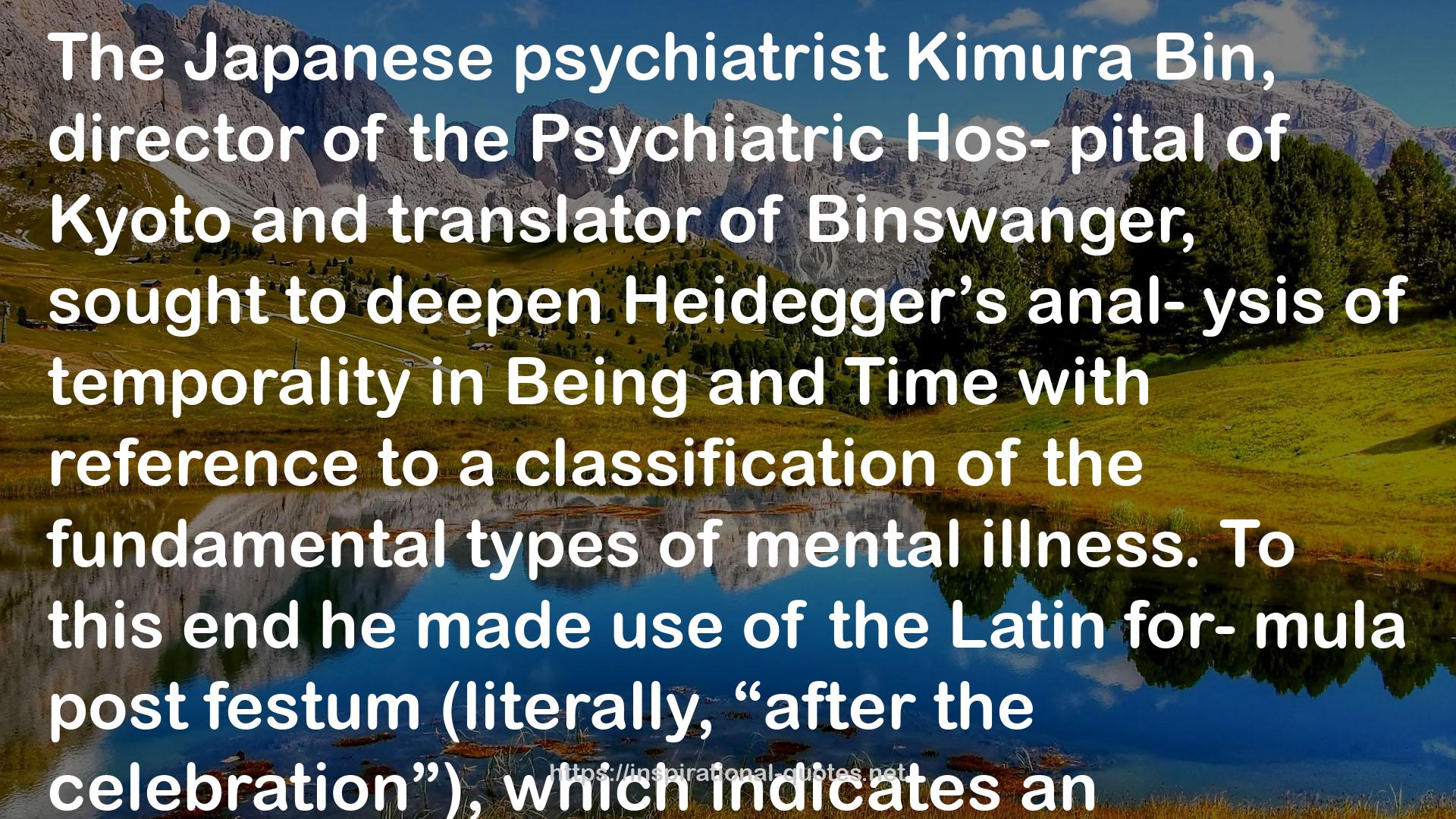" The Japanese psychiatrist Kimura Bin, director of the Psychiatric Hos- pital of Kyoto and translator of Binswanger, sought to deepen Heidegger’s anal- ysis of temporality in Being and Time with reference to a classification of the fundamental types of mental illness. To this end he made use of the Latin for- mula post festum (literally, “after the celebration”), which indicates an irreparable past, an arrival at things that are already done. Post festum is symmetrically dis- tinguished from ante festum (“before the celebration”) and intra festum (“during the celebration”).
Post festum temporality is that of the melancholic, who always experiences his own “I” in the form of an “I was,” of an irrecoverably accomplished past with respect to which one can only be in debt. This experience of time corresponds in Heidegger to Dasein’s Being-thrown, its finding itself always already abandoned to a factual situation beyond which it can never venture. There is thus a kind of constitutive “melancholy” of human Dasein, which is always late with respect to itself, having always already missed its “celebration.”
Ante festum temporality corresponds to the experience of the schizophrenic, in which the direction of the melancholic’s orientation toward the past is in- verted. For the schizophrenic, the “I” is never a certain possession; it is always something to be attained, and the schizophrenic therefore always lives time in the form of anticipation. “The ‘I’ of the schizophrenic,” Kimura Bin writes, “is not the ‘I’ of the ‘already been’; it is not tied to a duty. In other words, it is not the post festum ‘I’ of the melancholic, which can only be spoken of in terms of a past and a debt. . . . Instead, the essential point here is the problem of one’s own possibility of being oneself, the problem of the certainty of becoming oneself and, therefore, the risk of possibly being alienated from oneself” (Kimura Bin 1992: 79). In Being and Time, the schizophrenic’s temporality corresponds to the primacy of the future in the form of projection and anticipation. Precisely because its experience of time originally temporalizes itself on the basis of the future, Dasein can be defined by Heidegger as “the being for whom, in its very Being, Being is always at issue” and also as “in its Being always already anticipat- ing itself.” But precisely for this reason, Dasein is constitutively schizophrenic; it always risks missing itself and not being present at its own “celebration. "
― Giorgio Agamben , The Omnibus Homo Sacer
